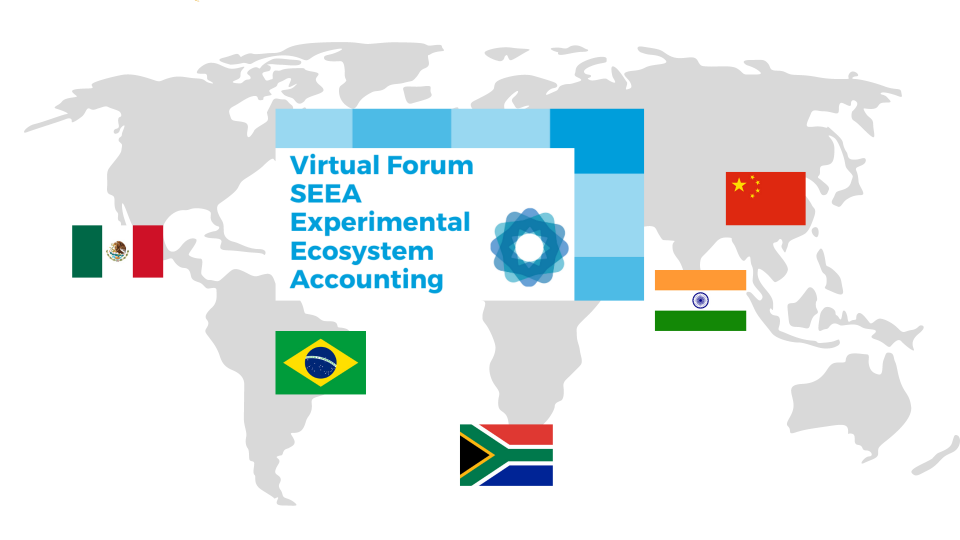NCAVES project countries progress in piloting ecosystem accounting and valuation of ecosystem services

For the third consecutive year, Brazil, China, India, Mexico and South Africa, the five countries implementing the Natural Capital Accounting and Valuation of Ecosystem Services (NCAVES) project, presented the progress made in piloting ecosystem accounts, during the first two sessions of the 2020 Virtual Forum of Experts in SEEA Experimental Ecosystem Accounting.
Over the course of two intense two-day sessions, focusing on ecosystem extent and condition and valuation of ecosystem services, the NCAVES countries had the opportunity to showcase progress, lessons learned and challenges in the implementation of extent and condition accounts and valuation of ecosystem services.
Brazil, India, Mexico and South Africa presented their results of testing the extent and/or condition accounts.
For instance, India and Brazil cross-walked-- their national ecosystem classification with the Global Ecosystem Typology (GET) developed by the IUCN. The results indicated that while a large number of classes can be linked 1-1 with IUCN’s Ecosystem Functional Groups, sometimes classes need to be split. The testing also identified a number of (national) ecosystems whose placement in IUCN typology was not clear, which will help to improve the IUCN Global and its descriptions.
South Africa, tested the three-stage process of compiling condition accounts, using its previous developed water accounts for rivers as test case. Mexico presented a data driven methodology to assess ecosystem condition integrating field and remote sensing variables using a Bayesian network to produce an ecosystem integrity index.
During the valuation session, China presented progress in the valuation of ecosystem services and South Africa presented the results from the study on the compilation and valuation of pilot monetary ecosystem services accounts in the province of Kwazulu Natal.
The project NCAVES, funded by the European Union, is jointly implemented by the UN Statistics Division and UN Environment.
